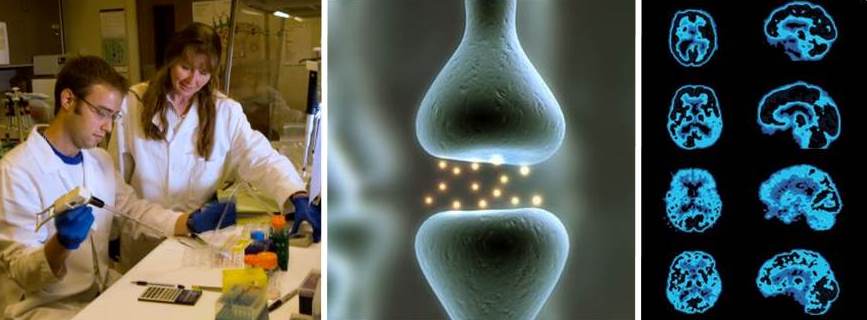 Faculty members conducting research at the Center for Neuroscience are using the methods and theories of physical science to investigate the mechanics behind neuromuscular diseases, such as myasthenia gravis and Lou Gehrig’s disease
Faculty members conducting research at the Center for Neuroscience are using the methods and theories of physical science to investigate the mechanics behind neuromuscular diseases, such as myasthenia gravis and Lou Gehrig’s disease
 Our researchers affiliated with the Center for Neuroscience are conducting basic research into normal brain structure and function. They are particularly interested in how function changes with age, cerebrovascular disease, and Alzheimer's disease and dementia.
Our researchers affiliated with the Center for Neuroscience are conducting basic research into normal brain structure and function. They are particularly interested in how function changes with age, cerebrovascular disease, and Alzheimer's disease and dementia.
Faculty members affiliated with the UC Davis MIND Institute are working to understand how brain function is altered by autism, fragile X and other neurodevelopmental disorders.
 Neurology department researchers are using anatomical and physiological tools to study neural mechanisms for sensory processing. They are working to understand how sensory information is encoded, processed and transmitted from one level of the brain to the next. Their work includes studying the neural circuitry involved in the visual pathway.
Neurology department researchers are using anatomical and physiological tools to study neural mechanisms for sensory processing. They are working to understand how sensory information is encoded, processed and transmitted from one level of the brain to the next. Their work includes studying the neural circuitry involved in the visual pathway.
 Our researchers are conducting the basic research needed to understand normal brain development. For example, scientists still do not know the basics of how the 100 billion neurons in the brain form the synapses, or chemical junctions, that allow them to communicate with one another and with certain other cell types in the body.
Our researchers are conducting the basic research needed to understand normal brain development. For example, scientists still do not know the basics of how the 100 billion neurons in the brain form the synapses, or chemical junctions, that allow them to communicate with one another and with certain other cell types in the body.
Research conducted by department faculty revealed that a protein altered in some people with autism establishes the first connection between neurons forming a new synapse. This kind of basic research lays the groundwork for finding treatments for disease of the brain.
 Department faculty affiliated with the IDeA lab located at the Center for Neuroscience investigate the biological basis of neurodegenerative diseases and cognitive changes associated with aging, including Alzheimer’s disease and dementia, and Parkinson’s disease.
Department faculty affiliated with the IDeA lab located at the Center for Neuroscience investigate the biological basis of neurodegenerative diseases and cognitive changes associated with aging, including Alzheimer’s disease and dementia, and Parkinson’s disease.
Researchers use structural and functional imaging techniques, including positron emission tomography (PET), single photon emission computed tomography (SPECT), magnetic resonance imaging (MRI), and functional magnetic resonance imaging (fMRI) and are developing new tools to evaluate the role of vascular disease in Alzheimer’s.

